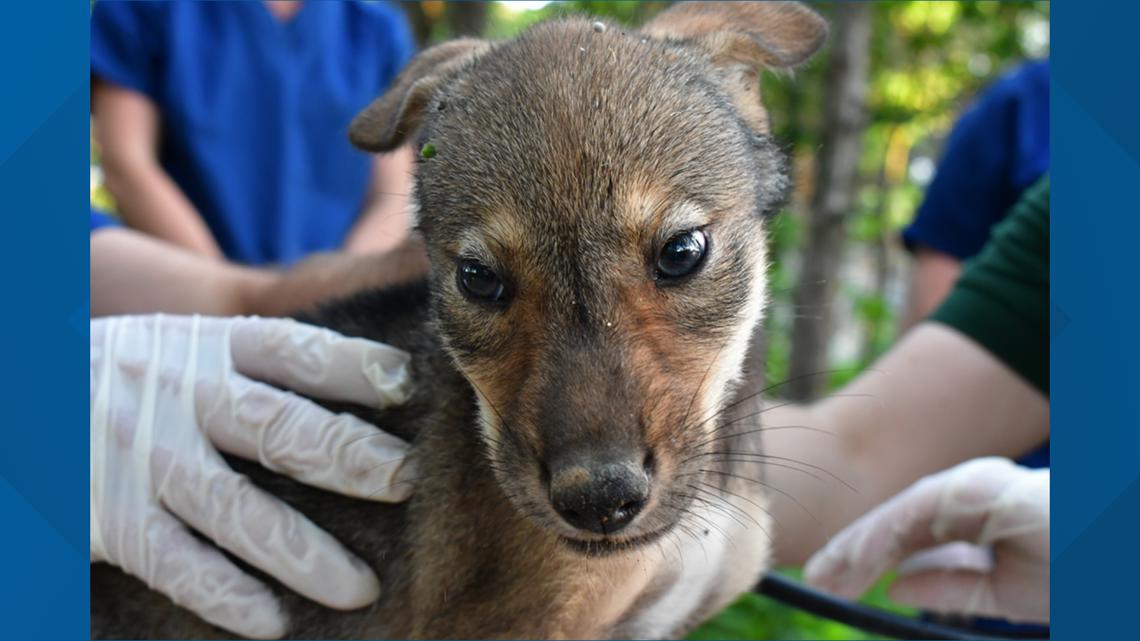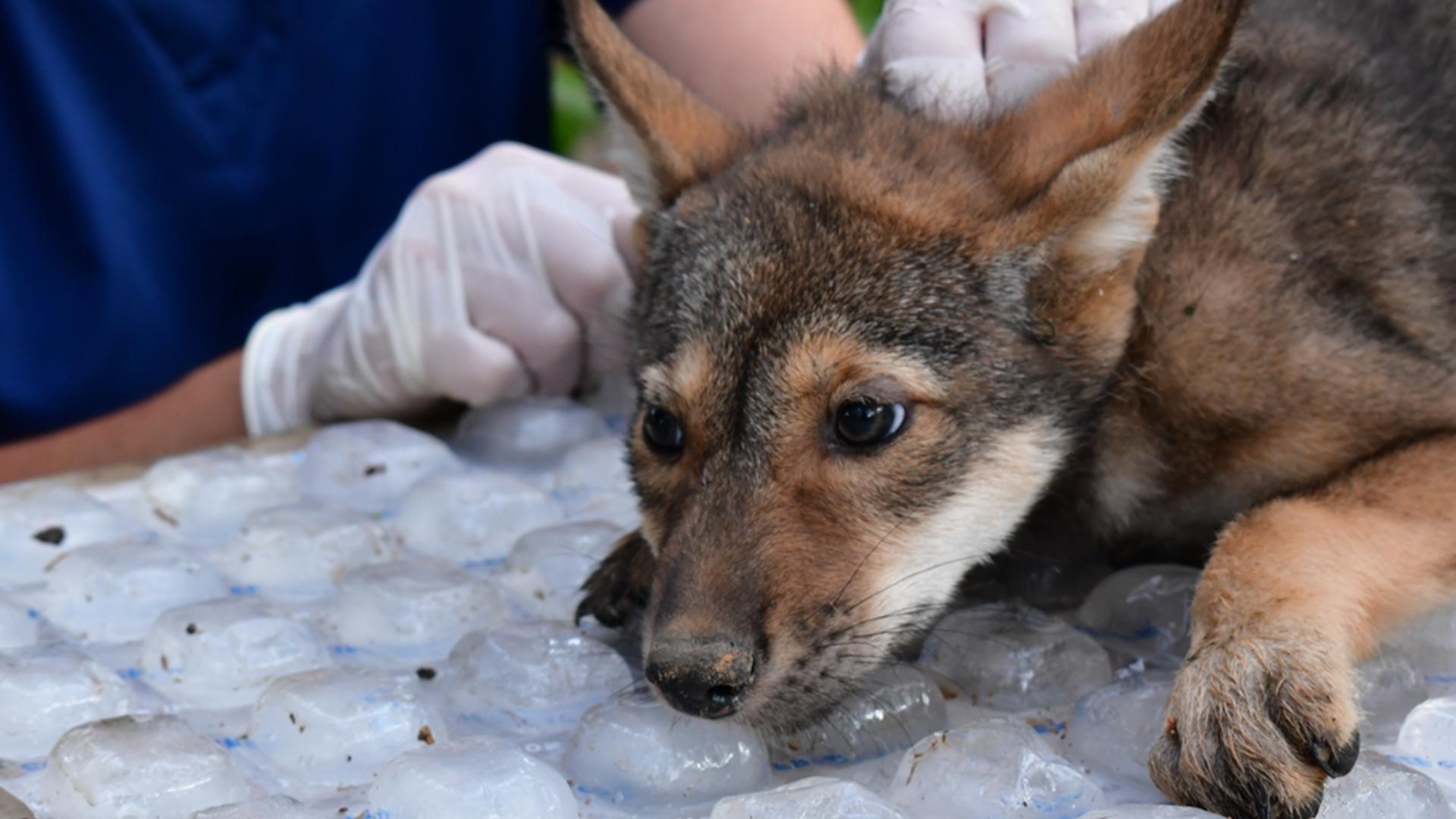ST. LOUIS — One of Missouri's most important and unique animals was nearly driven to extinction due to human persecution and expansion. Four of the species' newest members bring new hope to the fight for the species' conservation.
Red wolves once roamed across Missouri and much of the southern and eastern U.S., from Texas to New York, according to the Saint Louis Zoo. Wolves, known for being shy pack animals, gained a false reputation in medieval Europe for being sinister and deceitful, partially driven by isolated events of wolves preying on livestock.
This negative reputation was carried by European colonizers into the U.S. The subsequent persecution, paired with the encroachment of livestock grazing pastures into wolf habitat, led red wolves to be declared extinct in the wild in 1980. The last wild red wolf was seen in Missouri in 1950, the zoo said.
"It is lamentable that the red wolf has been allowed, in our time, to become practically extinct with so little consideration given to preserving the genetic strain, much less its continuation in the wild," an excerpt from the University of Missouri's Wild Mammals of Missouri text reads.
Since then, numerous efforts to bring the wolves back from the brink have been initiated across the country, including at the Saint Louis Zoo. Red wolves have since been labeled a "keystone species," meaning numerous plants and animals within ecosystems depend on the species to survive. The species is now exclusively found in the wild in North Carolina, where only 20 red wolves remain. An additional 290 red wolves live in human captivity.
The latest success in that conservation effort was announced on Monday. Four red wolf pups were recently born at the zoo's Sears Lehmann, Jr. Wildlife Reserve in Franklin County, marking the next step in a potential comeback for the species.


"When you consider how few red wolves remain, each birth is an achievement,” said Sabarras George, Director of the Saint Louis Zoo WildCare Park, who oversees the Wildlife Reserve. “I am incredibly proud of the team who have worked for years to reach this milestone.”
The first pup, named Otter, was born April 26. Three more pups, named Molly, Finn and Obi, were born May 4. All four of the pups were reportedly healthy and thriving at their first checkups in late June. They will remain with their parents for at least two years, but then may be sent to other institutions to start their own packs to continue the population's growth.
The zoo's Wildlife Reserve, which isn't open to visitors to ensure the wolves have privacy, operates its red wolf breeding program in partnership with the Association of Zoos and Aquariums, and the American Red Wolf Saving Animals From Extinction Program (SAFE).
SAFE identified 33 breeding pairs of red wolves across the country for the 2023-24 breeding season, including three pairs at the zoo's Wildlife Reserve.
“Hunting, habitat loss and human misconceptions about wolves have all played a role in the plight of the red wolf today,” said Regina Mossotti, Vice President of Animal Care at the Saint Louis Zoo. “But every new birth offers hope for future reintroduction efforts for this vital national treasure.”
Top St. Louis headlines
Get the latest news and details throughout the St. Louis area from 5 On Your Side broadcasts here.

